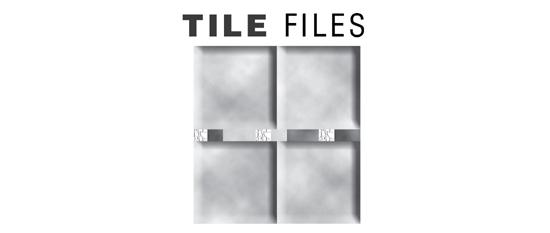Tile Files - Aug/Sep 2012
In an era defined by accelerating change both in the world at large and in the microcosm of the flooring industry, it is those elements that remain constant and consistent that truly stand out. Since the Middle Ages, Italy has been the ceramic center of the world, and there’s nothing to suggest this will change any time soon.
Yet Italy has not maintained its position by fighting the forces of change. It has evolved as the world has evolved; what has remained consistent is the creative flair and the passion of the artisan that generated those early designs in the chapels of Bologna of rabbits and birds in hexagonal geometries and now finds expression in microtextures and plays of light and the subtle movements between realism and stylistic interpretation.
When it comes to quality, design, innovation and technology, Italy remains the world leader in the ceramic industry, and is still the leading foreign source of supply for tile consumed in the U.S.
SASSUOLO, THE “TILE VALLEY”
At the heart of the Italian tile industry is Sassuolo, the industrial district located between the provinces of Modena and Reggio Emilia, where 80% of all Italian tile is manufactured—nearly three quarters of which is exported to markets around the globe. In this district there are nearly 150 companies employing over 21,000 people. The strong territorial density of companies and the high mobility of technicians, specialized workers and salespeople have played a huge role in generating a ceramics culture that has focused and spurred the constant development of innovative designs and technologies.
The close proximity of companies is also an advantage from an environmental point of view. Each Italian tile manufacturer shares in the responsibility to safeguard the resources of the region in which it operates, and deems the management of environmental issues to be one of the company’s top priorities. By participating in the European Union’s Environmental Management Program (EMAS) and ISO 14001/14002 environmental guidelines, manufacturers evaluate all areas of pollution and energy consumption and set targets for improvement. These programs are enforced in collaboration with public authorities that perform on-site inspections and interventions.
In the 1980s the Italians invented monocottura (“single-fired” tiles) that revolutionized the building industry, as well as roller ovens, used in the first firing, that led to energy savings and an increase in productivity and flexibility. The same decade saw a breakthrough in porcelain technology, with the first through-body tiles. More recently, with their strong ties to the design and fashion industries, the Italians have elevated the tile industry by partnering with icons such as Marcel Wanders, Patricia Urquiola, Roberto Cavalli and Lenny Kravitz. They pioneered super large (3m x 1m) and super slim (3mm) tiles that are both fashion forward and environmentally friendly, with reductions in energy consumption, raw materials and transport costs, and they introduced antimicrobial tiles that eliminate up to 99% of bacteria and offer long-lasting protection. Italian innovators have also created architectural solutions for ventilated wall facades and elevated flooring.
Despite all of the new competition in recent years, the Italian tile industry is still a world leader in terms of value. According to the U.S. Department of Commerce and the U.S. International Trade Commission, in 2011 Italian imports ranked third in terms of quantity (behind China and Mexico) but were valued at $373 million while Mexico and China were valued at $222 million and $213 million, respectively.
This year marks the 30th edition of Cersaie, taking place September 25 to 29 in Bologna, the same city where Pietro Andrea da Faenza decorated chapel floors in the 15th century with those enduring hexagonal motifs. Organized by Edi.Cer and promoted by Confindustria Ceramica, Cersaie is the world’s largest exhibition of ceramic tile and bathroom furnishings. With roughly 1,000 exhibitors from 31 countries and a sprawling 176,000 square meters of exhibition space, the show annually attracts over 80,000 attendees from all over the globe. Highlights of this year’s “Building, Dwelling, Thinking” conference program include: a keynote speech by 2011 Pritzker Prize winner Eduardo Souto de Moura, a talk on “Design Goes Sci-Fi” with American science fiction writer Bruce Sterling and Italian designer Cini Boeri, and a presentation by Heike Hanada on her design for the new Bauhaus Museum in Weimar, Germany.
Copyright 2012 Floor Focus
Related Topics:CERSAIE , CERAMICS OF ITALY, Armstrong Flooring
